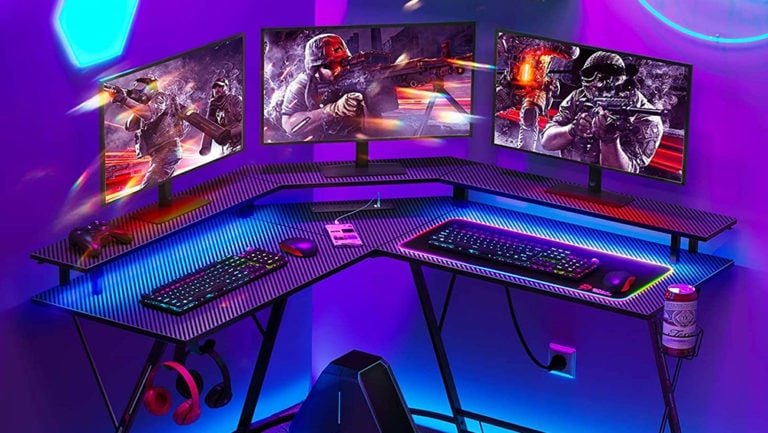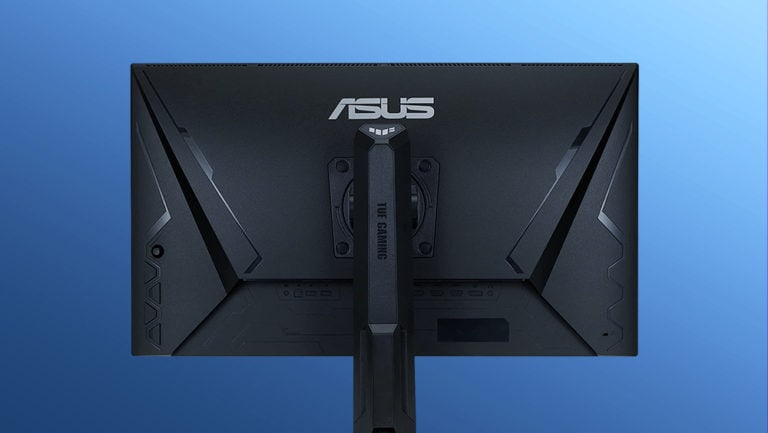How to become a concept artist in 5 steps

Concept artists are increasingly in demand in the video game, film and entertainment industry, as their work allows studios and production companies to visualize a rough end product and make decisions about it before production, saving them a lot of time and money.
To become a concept artist you need to acquire the knowledge and skills that allow you to understand and translate concepts into images effectively. In addition, you need to master the corresponding tools, to be able to produce and publicize your work in order to get hired.
Although there are many ways to become a concept artist, the following are the fundamental steps to becoming an effective concept artist, ready to solve your clients’ problems.
How to become a concept artist in 5 steps in 2025
1. Acquire the fundamentals of Art
Concept artists must be able to make quick illustrations of everything, from interfaces to characters, landscapes, vehicles or props, which can then be developed in 2D or 3D.
Consequently, the concept artist must have a solid grasp of the principles of art and design, such as balance, proportion, unity, contrast, emphasis, rhythm, repetition and movement.
The goal of these fundamentals is to be able to apply them in their designs and illustrations, as well as to reason them out and discuss their artistic decisions with the team involved, whether they are art directors, 3D artists, programmers or people from the marketing department.
What education does it take to become a concept artist?
Concept artists usually have a degree in Graphic Communication, Graphic Design or similar, have a diploma related to Visual Arts or have done a master’s degree in Concept Art.
However, in my opinion it doesn’t matter what training you have in particular, but how qualified you are to work as a professional concept artist. What defines your value in the professional world is the work you are capable of doing, not your qualifications.
Therefore, I recommend you to opt for institutions that offer plans focused on the practical application of what you learn and that also include internships in companies, because that’s where you progress the fastest.
If you want to get a general idea of the concept art world before choosing one course or another, I recommend the following course by Guillem H. Pongiluppi. He’s a professional concept artist, official illustrator of the Star Wars saga and has worked for PlayStation, Sega, ILM, Mythic Games, Monolith, Bethesda and Creative Assembly, among others.
Initiation to Concept Art: Designing the Future
Cultivate your artistic sense
Concept art aims to create believable images, so it is important that you train your eyes and your brain to recognize, understand and decipher how to produce those images with your hands.
The best way to do this is to soak in the art of the best. And by this I don’t just mean the most popular concept artists, but also the classic artists of different periods and styles.
Some of my favourite artists, whose works could be concept art for a video game or movie are Jacques-Louis David, Jean-Léon Gérôme, Caravaggio y Velázquez.

2. Learn how to use the best tools for Concept Art
Every industry has its favourite tools and although there are many options for working with concept art, I’m going to focus on the ones used in most studios and production companies, as this will make it easier for you to get into any company.
Photoshop

Photoshop is the industry-standard tool for concept art, both for its potential for illustration and photomontage work, as well as for its compatibility with other multimedia editing programs.
Photoshop is more than 30 years old and it is no coincidence that it is still the most used program by concept artists. It is a very stable tool that every year improves the user experience, the repertoire of tools and the potential of the existing ones.
The program combines illustration and design tools with photo editing tools and even simple 3Ds handling, which makes it a very versatile ally for any concept artist.
At the same time, Photoshop is compatible with most programs for video, animation, 3D design, etc., so transferring your designs to other programs so that the rest of the team can continue working with your work is much simpler and more practical.
There are many courses to learn Photoshop, but if you don’t want to waste a minute, the following course focuses on the most practical techniques and tools for concept artists.
The teacher is Nacho Yagüe, a concept artist who has worked on video games like Splinter Cell, Watch Dogs and Assassin’s Creed and during more than 6 hours he will teach you the keys to get the most out of Photoshop.
Adobe Photoshop for Concept Art
Pen tablet o tablet display
Another tool you should get used to is the use of a tablet, either with or without a screen. Not that it’s mandatory to use one, but agility is expected from a concept artist and, in this sense, working with a pen tablet or a tablet screen gives you much more speed and greater control of your strokes than a mouse.
You don’t need to start with an expensive graphics tablet, but it does need to be of good quality, so that your strokes are faithfully reflected on the screen.
3. Practice your skills as a concept artist
You can work as a concept artist in many industries, such as film, television or video games. In each of these you may be commissioned to represent more general artistic concepts, such as capturing the mood of a story, a world or a level of a video game.
However, you may also be asked to depict more specific elements, such as characters, buildings, props, costumes, or specific vehicles. As you can imagine, designing all this variety of elements requires diverse artistic skills, so it’s worth learning how to deal with these specific challenges and practising a lot to reach a professional level.
Fortunately, there are courses taught by top professionals that can help you understand and solve these challenges. In addition, these courses offer exercises that will help you practice and create your first works to show in your portfolio. Below you will find some of the best ones.
Concept Art for Video Games
Acquire real-world experience
Working on your own projects helps you practice and develop your skills, but the experience is not comparable to facing a real brief, working with a team of several people or adjusting to the timing of a pre-production.
Therefore, a good way to develop your skills, while gaining experience in the professional world, is to do an internship in a studio or production company. This will allow you to get to know the professional environment, learn how everything works and start building your professional network.
Working in a professional environment will also allow you to learn your technical and organizational skills. Working alongside experienced professionals can help you progress very quickly if you maintain a positive attitude and are open to learning.
4. Create a portfolio with your best work
Your portfolio is key when it comes to finding work as a concept artist, as it allows your potential clients to see a sample of what you are capable of doing. Therefore, it is recommended that it is representative of the different styles you master and the different types of elements you are able to illustrate.
Include a little information about the context of each project and the objective of each piece to help whoever has to evaluate your portfolio to understand your way of facing and solving Concept Art challenges.
Choosing well what works you put in your portfolio and how you present them is key to highlight your value as a concept artist. In this sense, I recommend you take note of the course I present below, where Sandra Lopez and Angel Domingo advise you on how to develop a professional portfolio.
They have an agency of illustrators and hundreds of portfolios pass through their hands and they are in permanent contact with agencies and studios, so they know what works, what doesn’t and why.
Keys for Creating a Professional Illustration Portfolio
Promote your work
For a portfolio to be effective, you have to know how to get it to art directors, creative directors, producers and other potential clients.
The more your portfolio is shared with industry professionals, the more likely it is that someone will see your work, share it or be interested in hiring you. For that reason, it is important to adapt your portfolio for social networks and portfolio websites, such as Behance, where your potential clients will recruit professionals.
To design an effective promotion strategy for your portfolio, I recommend the following course by Andrea Jelic on portfolio design and promotion on social networks. A concise course that gets straight to the point.
Portfolio Design with Figma: Self-Promotion for Creatives

5. Find your first job as a Concept Artist
Once you’ve gained practical experience, published your portfolio and made yourself known, it’s time to find your first job. It’s important to have all of this ready, so that when you start applying for jobs, any professional in the industry can take a look at your work and see if it fits what they need.
If you have done an internship in a company, that can be your gateway to the professional world, but if not, you have two options: offer your services to a studio, an agency or a production company, either as a salaried employee or as a freelancer. In either case, you should look for job offers that match your level and experience and then apply for the job.
Many of these offers can be found through generic professional networks, such as Indeed, LinkedIn, Glassdoor or Upwork, or through more specialized illustration and design websites, such as ArtStation or Behance. It is important to research the different offers and compare them, as not all companies offer the same conditions for the same job.
Create and submit your resume and cover letter
Most job offers will require you to attach or link your portfolio, your CV and, sometimes, a cover letter to your application. The portfolio you should already have created by now, so let’s focus on the CV and cover letter.
Creating a good CV and cover letter is not easy. They should highlight your most relevant skills and knowledge for the position you are applying for, and these may not match the ones that seem most relevant to you, so it is important to think about the recruiter’s point of view when deciding what to put and how to put it.
In this regard, I find the recommendations and advice of Nikky Lyle, who is a creative recruter with over a decade of experience, particularly useful.
Thousands of CVs and cover letters have passed through her hands and in the following course she explains how to find your USP (unique selling proposition), what should not be missing in your CV, how to write a cover letter that will attract your recruiters and much more.
Resumes for Creatives: Craft Your CV and Cover Letter







